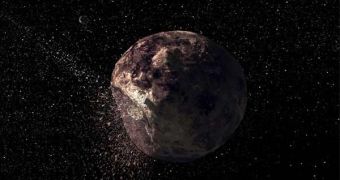The recently discovered 2 Pallas is an asteroid located between Mars and Jupiter, and previous investigations have determined that it is a bit too impressive in size to be a simple rock. Indeed, the first high-resolution images to come to astronomers seem to demonstrate that the celestial body is a protoplanet, as speculated, which could have developed into a normal one, had it been given more suitable conditions. Accompanying 2 Pallas in the inner asteroid belt are also the protoplanets Ceres and Vesta, both of which are also intact, despite the “neighborhood” they orbit the Sun in.
“It was incredibly exciting to have this new perspective on an object that is really interesting and hadn't been observed by Hubble at high resolution. We were trying to understand not only the object, but how the solar system formed. We think of these large asteroids not only as the building blocks of planets but as a chance to look at planet formation frozen in time,” University of California in Los Angeles (UCLA) Department of Earth and Space Sciences doctoral student Britney E. Schmidt says.
The expert believes that the planet has remained intact since it first formed through accretion, most likely only millions of years after the solar system itself appeared. In a paper appearing in the October 9 issue of the journal Science, she adds that, “To have the chance to use Hubble at all, and to see those images come back and understand automatically this could change what we think about this object, that was incredibly exciting to me.” 2 Pallas was named after the Greek goddess of wisdom, Pallas Athena.
One of the peculiar things about the protoplanet is that it has a family of smaller objects accompanying it, whereas all the other large asteroids in the belt, with the exception of a few, have already broken up into smaller pieces, after billions of years of constant crashes with each other. “It's interesting, because there are very few large, intact asteroids left. There were probably many more. Most have been broken up completely. It's an interesting chance to almost look into the object, at the layer underneath. It's helping to unravel one of the big questions that we have about Pallas, why does it have this family?” Schmidt asks.
“When people think of asteroids, they think of 'Star Wars' or of tiny little rocks floating through space. But some of these have been really physically dynamic. Around 5 million years after the formation of the solar system, Pallas was probably doing something kind of interesting,” the expert concludes.

 14 DAY TRIAL //
14 DAY TRIAL //